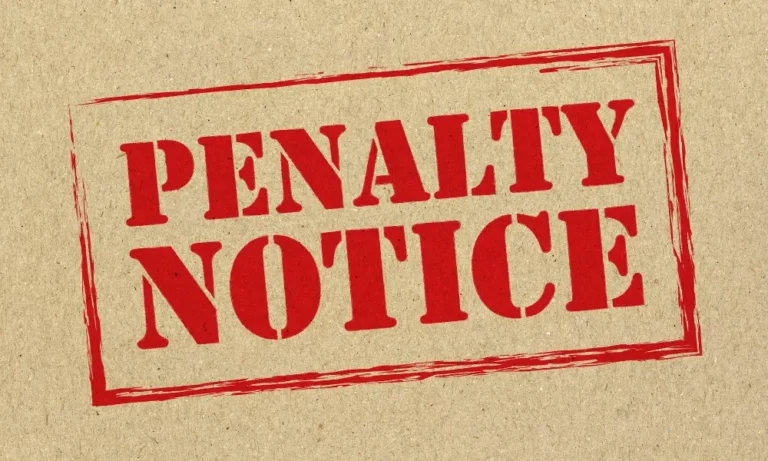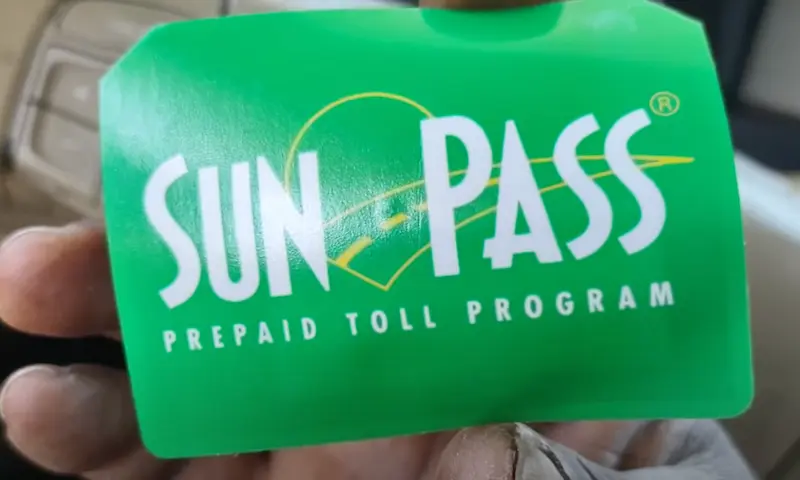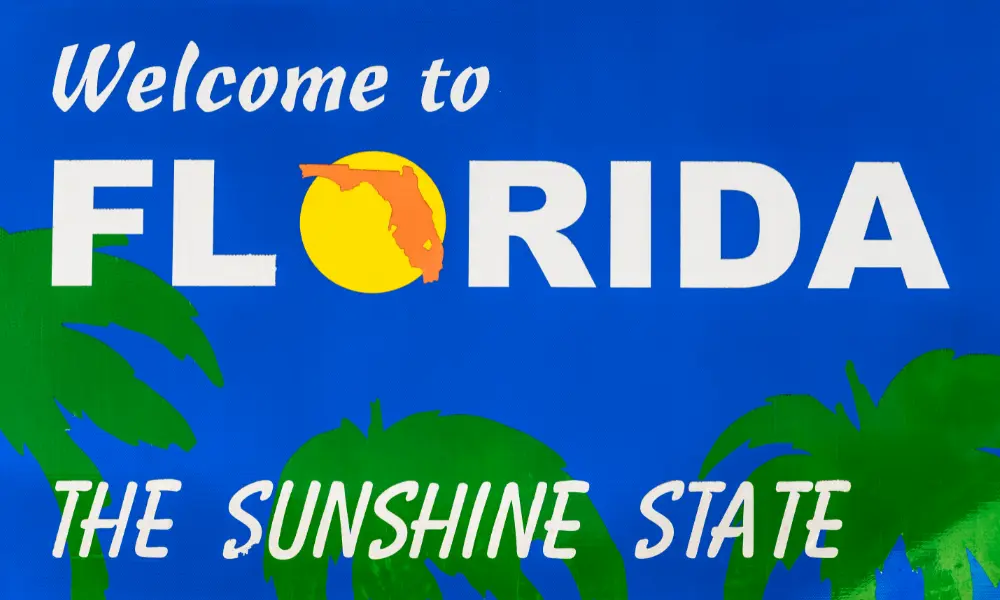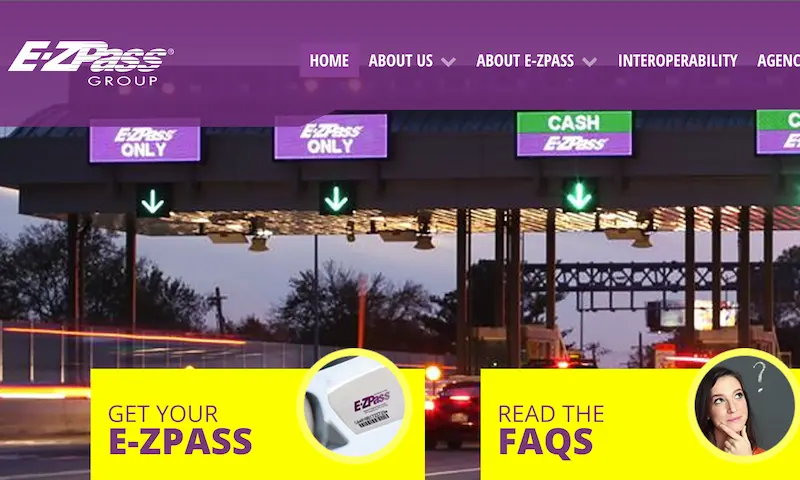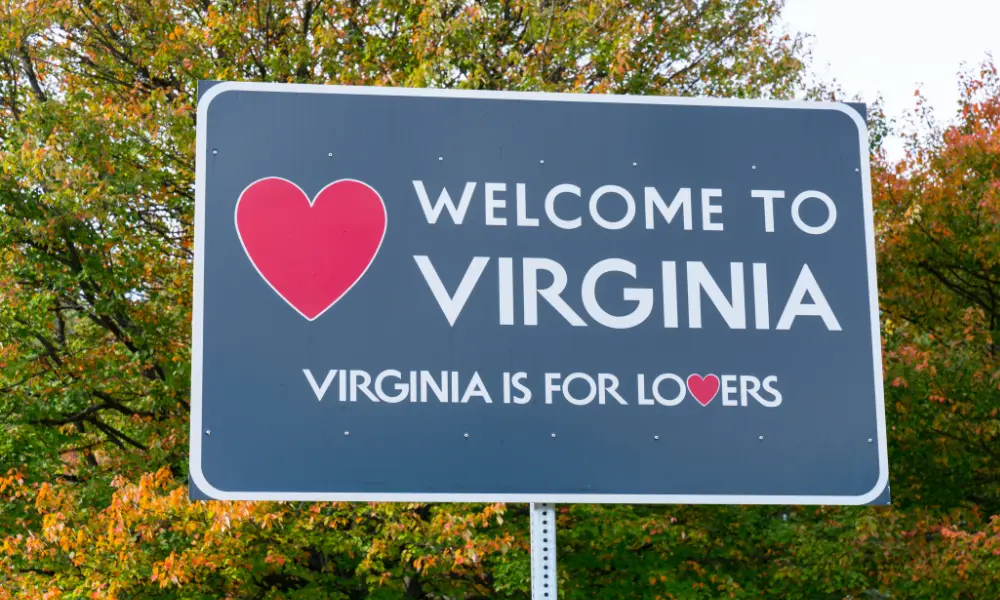Got that dreaded FasTrak toll evasion notice in the mail? You’re probably wondering how much this mistake will cost you and if there’s any way out. Whether you accidentally drove through a toll lane without a transponder or your FasTrak account had insufficient funds, understanding the penalty system is key to minimizing the damage to your wallet.
How FasTrak Toll Evasion Penalties Work
When you zip through a toll without paying, cameras snap a photo of your license plate, and the system gets to work. FasTrak doesn’t immediately hit you with massive fines – instead, they use a tiered penalty structure that starts relatively small but can grow quickly if ignored.
The basic penalty framework typically begins with a $10 penalty added to your unpaid toll on the first notice. If you don’t pay this initial notice, things escalate fast – the second notice typically jumps to $30 on top of your original toll amount. This progressive structure is designed to encourage quick payment while giving you a reasonable chance to fix your mistake.
But here’s where it gets tricky – the exact penalty amounts vary significantly depending on which toll system caught you.
Penalty Amounts Across Different California Toll Systems
California’s toll systems don’t all play by the same rules when it comes to penalties. Your costs will depend entirely on which bridge or road you crossed.
Bay Area State-Owned Bridges
For the Antioch, Benicia-Martinez, Carquinez, Dumbarton, Richmond-San Rafael, San Francisco-Oakland, and San Mateo-Hayward bridges, the process works like this:
- Initial toll invoice: Just the toll amount (if paid within 21 days)
- First violation notice: $5 penalty per crossing + toll amount
- Second violation notice: $15 penalty per crossing + toll amount (can be reduced to $5 if paid within 15 days)
Golden Gate Bridge
The Golden Gate Bridge hits your wallet considerably harder:
- Initial toll invoice: Just the toll amount (if paid within 21 days)
- First violation notice: $25 penalty per crossing + toll amount
- Second violation notice: $50 penalty per crossing + toll amount (can be reduced to $25 if paid within 15 days)
Southern California Toll Roads
The Toll Roads system in Southern California takes yet another approach:
- Each violation: $57.50 penalty + toll amount
- However, if you’re a first-time violator, they’ll waive the penalty as a courtesy
Metro ExpressLanes (Los Angeles County)
Metro ExpressLanes now offers a permanent “Pay As You Go” program:
- $8 + the posted toll rate (down from a previous minimum of $25)
- This makes occasional express lane use more affordable for drivers without FasTrak accounts
| Toll System | Initial Penalty | Second Notice Penalty | First-Time Forgiveness |
|---|---|---|---|
| Bay Area State Bridges | $5 | $15 (reducible to $5) | Yes, with new account |
| Golden Gate Bridge | $25 | $50 (reducible to $25) | Yes, with new account |
| Southern CA Toll Roads | $57.50 | Additional $42.50 | Yes, penalties waived |
| Metro ExpressLanes | Pay As You Go: $8 + toll | Increases (specific amount not listed) | Account options available |
What Happens If You Don’t Pay Your FasTrak Penalty
Ignoring a toll violation isn’t just a matter of dodging a small fee – it sets off a chain reaction that gets worse with time. Here’s what to expect if you choose to ignore those notices.
The Notification Timeline
The clock starts ticking as soon as you pass through that toll point without paying. Within about 21 days, the registered owner (based on DMV records) receives the first notification. This highlights why keeping your vehicle registration address up to date is crucial – notices sent to old addresses still count as delivered.
You’ll typically have 15-30 days to respond to this first notice before things escalate. The exact timeframe depends on which toll operator caught you, but all systems give you a reasonable window to address the issue.
The Escalation Process Hits Your Wallet Hard
If you ignore that first notice, expect a second notice with substantially higher penalties. As shown in the table above, these penalties can jump dramatically – from $5 to $15 on state-owned bridges or from $25 to $50 on the Golden Gate Bridge.
Some systems add even more fees. The Toll Roads in Southern California may tack on an additional $42.50 for not responding to the initial notice, potentially bringing your total penalty to $100+ per violation. That quick drive-through suddenly becomes very expensive.
DMV Registration Holds and Collections Actions
The most serious consequence comes when toll operators send your unpaid violations to the DMV. At this point, a hold gets placed on your vehicle registration. This means you can’t renew your registration until you’ve paid off all outstanding toll violations plus additional processing fees.
Beyond registration holds, some toll authorities refer unpaid violations to collections agencies. This can potentially impact your credit score, making that unpaid toll violation a much bigger financial headache than you’d ever expect.
How to Get Out of FasTrak Penalties (Legally)
Don’t panic – there are several legitimate ways to reduce or eliminate toll penalties, depending on your situation.
First-Time Violator Programs
If this is your first offense, you’re in luck. Most California toll systems offer first-time violator forgiveness programs. The most common approach is to waive the penalty if you establish a FasTrak account.
According to the Schedule of Penalties for Toll Evasion Violations, “For 1st time offense, a non-customer can open a FasTrak account and the $10 penalty will be waived.” This means you’ll only pay the original toll amount if you set up proper payment for future crossings.
The Toll Roads system in Southern California is particularly generous, stating: “If the registered owner has no previous violations, the penalties will be waived. This is a courtesy for first time violators only.”
This policy is consistently applied, with many users reporting success: “Just sign up for a fastrak account tied to your license plate and then apply it retroactively and they’ll waive the penalty. You’ll also be covered for future trips.”
Benefits for Existing FasTrak Account Holders
Already have a FasTrak account? You might be completely off the hook. For “FasTrak account holders in good standing, toll-only will be posted to the account balance.” This means if you maintain sufficient funds in your account, you won’t face penalties for occasional violations that might happen due to transponder malfunctions or other technical issues.
There’s just one qualification – “If the account balance is less than the amount of the toll, the account balance must be brought to the opening balance amount prior to posting the violation toll amount.” Essentially, make sure your account is properly funded before trying to resolve the violation.
Low-Income Assistance Options
If you’re facing financial hardship, some toll authorities offer special assistance programs. FasTrak operates a low-income toll penalty waiver program for households with “income of no more than 200 percent of the federal poverty level (approximately $62,500 for a family of four).”
To access this program, contact FasTrak directly at their toll-free number. Keep in mind that while the penalty portion may be waived, you’ll still need to pay the original toll amount and any DMV-related fees.
Beware: FasTrak Toll Evasion Scams on the Rise
As legitimate toll systems expand, scammers have followed – targeting drivers with fake communications about unpaid tolls. Protect yourself by knowing the warning signs.
Text Message Scams to Watch For
A common scam involves fraudulent text messages claiming you have unpaid tolls. These create false urgency, demanding immediate payment to avoid severe consequences like license suspension. According to recent reports, “Drivers across the country are being sent a scam text message asking them to pay an unpaid toll fee for FasTrak.”
These texts often follow a pattern like: “Please pay your FastTrack lane tolls by [date]. To avoid a fine and keep your license, you can pay at [suspicious link].” One red flag is the misspelling of “FasTrak” as “FastTrack,” though more sophisticated scammers might get the spelling right.
Clicking these links can lead to identity theft or financial fraud when scammers capture your personal and banking information. This represents a much more serious risk than legitimate toll penalties.
How Legitimate Toll Notices Actually Work
Real toll authorities don’t typically send text messages to non-account holders. As ABC7 News reported, “Officials with ‘Toll Roads,’ the company that operates FasTrak says it does not send text messages to non-account holders.”
For FasTrak account holders, legitimate communications about specific toll amounts come through official channels like mailed notices or account statements – not unsolicited texts. The primary method for toll violation notices remains official mail sent to your DMV-registered address.
How to Verify and Report Suspicious Communications
If you receive a suspicious communication about toll violations, verify its legitimacy through official channels. Don’t respond directly or click any links. Instead:
- Check your account on the official FasTrak website
- Contact the toll authority directly using the phone number from their official website
- If you determine it’s a scam, file a complaint at www.ic3.gov (the Internet Crime Complaint Center run by the FBI)
Reporting these scams helps authorities track fraudulent operations and warns other potential victims.
How to Pay a Legitimate FasTrak Toll Evasion Penalty
When you confirm you have a legitimate violation, several payment options are available.
Online Payment Options
The simplest way to resolve a toll violation is through the official FasTrak website. Visit the Bay Area FasTrak payment portal or the appropriate regional FasTrak site. You’ll need your violation notice number and license plate information.
The online system allows you to pay with major credit cards and provides immediate confirmation of payment, which can be important if you’re close to a deadline for increased penalties.
Phone and Mail Payment Methods
If you prefer to pay by phone, each violation notice includes a toll-free number to call. Customer service representatives can process your payment and answer any questions about the violation.
For mail payments, follow the instructions on your violation notice carefully. Be sure to include your violation notice number on your check or money order and allow sufficient time for mail delivery before the payment deadline.
Setting Up a FasTrak Account to Avoid Future Penalties
The most effective way to avoid future violations is to establish a FasTrak account. This can be done online at the official FasTrak website or by calling their customer service number.
You’ll need to purchase a transponder (typically $20-25, which becomes account credit) and link it to your license plate and a payment method. With an active account, you’ll avoid penalties even if your transponder occasionally fails to register, as the system will match your license plate to your account.
Disputing Incorrect FasTrak Toll Violation Notices
Sometimes the system makes mistakes. If you believe you’ve received a violation notice in error, you have options.
Valid Reasons for Dispute
Legitimate reasons to contest a violation include:
- You had a valid FasTrak account with sufficient funds at the time of crossing
- The vehicle identified wasn’t yours (license plate misread)
- You already paid the toll through another method
- You sold the vehicle before the violation date
- The toll facility was experiencing technical issues during your crossing
The Dispute Process
To dispute a violation, you must submit a written request through one of these methods:
- Through the online payment portal’s dispute option
- By mail, following the instructions on your violation notice
- In person at a customer service center (available in some regions)
Include all relevant evidence supporting your case, such as FasTrak account statements, vehicle sale documentation, or proof of payment. Photographs can be helpful if they show incorrect license plate identification.
Deadlines and Response Expectations
Submit your dispute before the payment deadline on your notice to prevent escalation to the next penalty level. Most toll agencies respond to disputes within 15-30 business days. During this review period, penalties typically won’t escalate further, but it’s wise to confirm this with the toll operator when filing your dispute.
If your dispute is denied, you’ll receive a written explanation and often have one additional opportunity to appeal the decision before facing the full penalty amount.
Strategies to Never Pay a FasTrak Toll Evasion Penalty Again
The best way to handle toll violations is to prevent them entirely. Here are practical strategies to keep your driving record clean and your wallet intact.
Setting Up Automatic Toll Payment Methods
The most reliable prevention method is establishing a FasTrak account with automatic replenishment. Link your account to a credit card that automatically adds funds when your balance falls below a threshold (typically $10). This ensures you always have sufficient funds for tolls.
For even more protection, register multiple vehicles to your account and enable license plate recognition as a backup to your transponder. This creates multiple layers of payment verification.
Using Mobile Apps and Notifications
FasTrak and regional toll operators offer mobile apps that provide real-time account information and alerts. Set up low balance notifications to avoid funding issues, and use the app to check your recent toll history.
Some apps also include maps of toll facilities, which can help you plan routes and understand where and when tolls apply – particularly helpful when driving in unfamiliar areas.
Special Considerations for Rental Cars
When renting a car, you have several options to avoid toll violations:
- Use your portable FasTrak transponder (if allowed by the rental agreement)
- Opt into the rental company’s toll payment program (though this typically includes daily fees)
- Plan routes that avoid toll roads entirely
- Pay tolls online within 48-72 hours after crossing (available in some regions)
Always check your rental agreement for specific toll policies, as some companies add significant surcharges for processing toll violations.
Toll Evasion Prevention for Commercial Vehicles
Commercial vehicle operators face additional challenges and potentially higher penalties for toll violations. Specialized accounts and precautions can prevent costly mistakes.
Commercial FasTrak Accounts
Business accounts offer features specifically designed for commercial operations:
- Multiple transponder management under one account
- Detailed reporting for expense tracking and tax purposes
- Higher balance thresholds to accommodate frequent crossings
- Optional axle-based toll calculations for larger vehicles
Fleet Management Best Practices
For businesses managing multiple vehicles:
- Maintain an up-to-date vehicle roster in your FasTrak account
- Assign specific transponders to specific vehicles and log any reassignments
- Train drivers on proper transponder usage and toll facility protocols
- Implement regular account reconciliation to catch potential issues early
- Consider specialized fleet management software that integrates with toll payment systems
These practices ensure your business maintains compliance while efficiently managing toll expenses.
Practical Tips for Handling Multiple Toll Violations
If you’ve accumulated several violations, addressing them requires a strategic approach to minimize penalties and prevent further escalation.
Prioritizing Violations by Deadline
When facing multiple violations, organize them by payment deadline rather than violation date. This ensures you address those closest to escalation first, preventing additional penalties while you work through the rest.
Create a payment calendar to track deadlines, and consider setting up payment reminders in your phone or email to avoid missing critical dates.
Negotiating Payment Plans
Many toll operators offer payment plans for drivers facing multiple violations or significant penalty amounts. These arrangements typically allow you to resolve your violations without paying the full amount immediately, though you’ll need to maintain the agreed payment schedule to prevent further penalties.
Contact the toll operator’s customer service department directly to discuss your specific situation and available options.
Documenting All Communication
When resolving multiple violations:
- Keep detailed records of all communications
- Note the date, time, and name of any customer service representatives you speak with
- Request written confirmation of any agreements or special arrangements
- Save email confirmations and receipts for all payments
- Screenshot online payments showing confirmation numbers
This documentation can prove invaluable if questions arise later about the status of your violations or payment history.
By understanding how FasTrak toll evasion penalties work and knowing your options for addressing them, you can minimize financial impact and prevent future issues. Whether you’re a first-time violator entitled to penalty forgiveness or a regular toll road user setting up reliable payment methods, taking prompt action is always the best approach.

